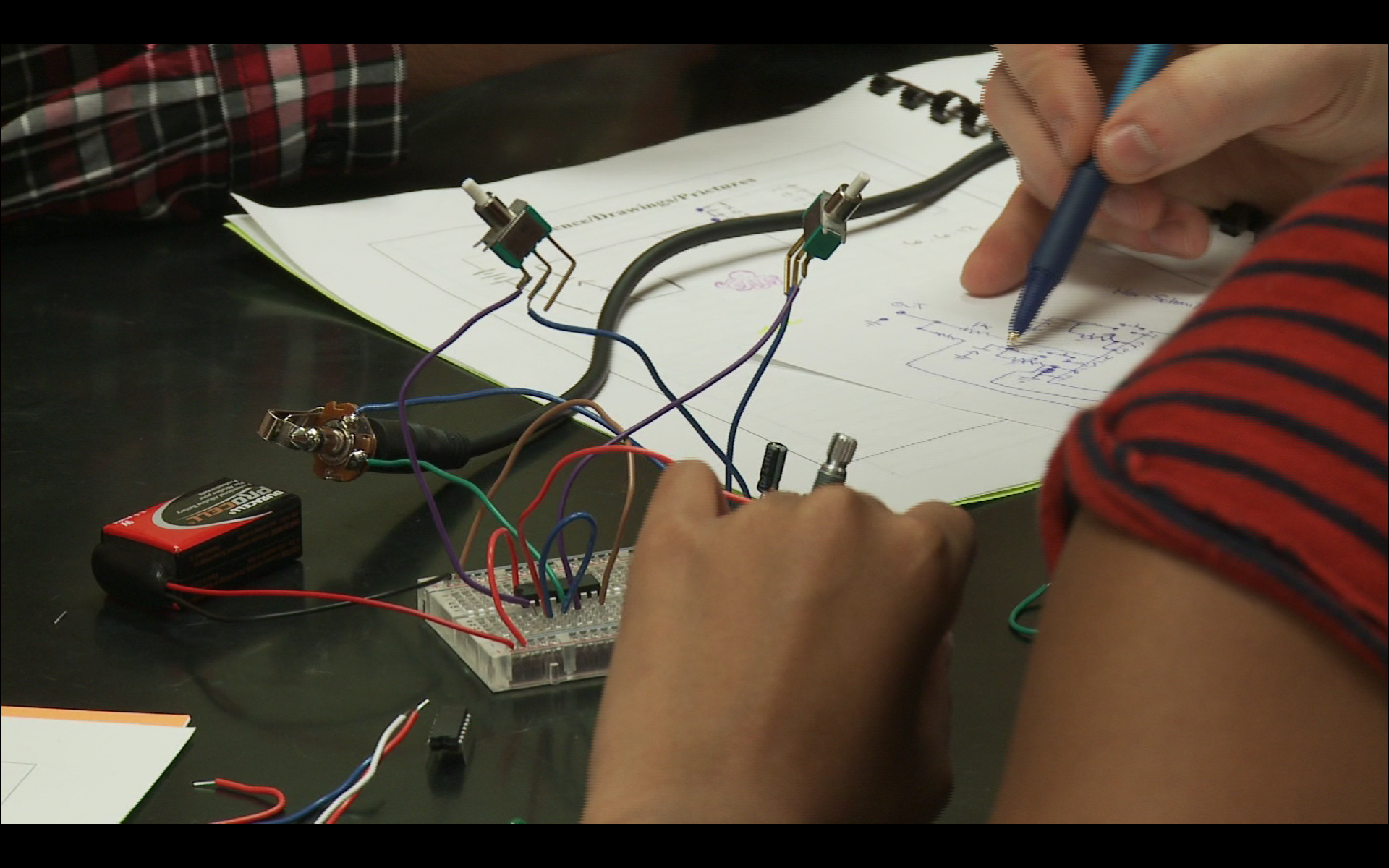During the last week of the school year, thanks to the support of the National Science Foundation (NSF) and TERC, we were able to select three artist-engineers to work with our 9th grade Engineering classes for “Design Comes Alive.” The projects culminated in presentations on the last day of school.
Click here for video of the Design Comes Alive process and presentations!
Our BAA STEAM team was excited for the opportunity to provide students with an interdisciplinary, collaborative project that required them to use both the engineering and design processes as well as habits of studio thinking to problem-solve, design, and create.
Ed Moriarty (MIT) and his BU and MIT students worked with BAA students to design and build water fountains. These fountains used the principle of total internal reflection to create a large number of small glowing streams that changed properties based on ambient sound or other environmental conditions.
Zachary Katz taught fundamental electronics concepts and students created a functioning electronic musical instrument or light display. Visual pieces were installed, and musical pieces were performed.
Tabaré Akim Gowon’s project was entitled LightMotion – The Illuminated Movement Orchestra. Students designed six unique wearable “Movement Instruments” that consisted of electroluminescent (EL) wire, a microcontroller, and a wireless networking device for communicating to a master user control system. A seventh student “Light Conductor” used a motion input device—the Xbox 360 Kinect—to transform body movement into a method for determining which Movement Instruments were illuminated during the performance at a given time.
I was blown away by the students’ enthusiasm for their work, especially since the projects occurred at the end of the school year, when students can tend to “check out.” As STEAM faculty Ramiro Gonzalez reflected, “The project was seven days long, and it occurred at the end of the year and after the MCAS test. What I witnessed in those seven days was student frustration, disorientation, stress, anxiety and failure. I also saw the adults challenge the students and give them support and resources. Slowly I saw envisioning, collaborations, commitment and engagement, and finally I saw pride and accomplishment. I also saw differentiation and a great deal of risk taking.”
Congratulations to the guest artist-engineers, the STEAM team, and especially our 9th grade Engineering students for their amazing work!





